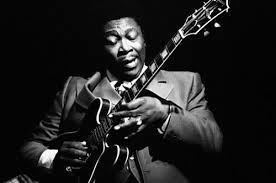The Blues: Popularity and
the Acculturation of Storytelling
Introduction
The blues acted as a new form of story-telling similar to the West African griot ( a West African musician who would deliver stories about their cultural history through songs and tales) and developed alongside other styles of music, such as gospel, during the 1900s-20s.
This genre also continued folks’ purpose of expressing dissatisfaction with the state of affairs in their community, especially with the newly implemented Jim Crow laws. However, the blues didn’t just tell a story of their oppression or situation, but rather connected it with the emotion associated and was emphasized by the melancholic tunes of the musician’s instrument.
The blues was one of many genres in which black musicians sought to succeed beyond their circumstances through the music industry. Though the blues became associated with unsavory things such as drugs, alcohol, etc. during its early years, it still managed to gain popularity not only among African American audiences, but white audiences as well. As with many music genres in the United States which have originated from the passion and creativity of black artists, white musicians began to steal, play, and record the blues, gaining more popularity than the original artists who created it.
Music Qualities/Structure
The blues was an acculturation of Western and African music qualities, similar to folk music. The blues scale, a modification of the Western music scale to incorporate the flat 3rd 5th and 7th, created a new formation of chord progressions. The genre also differed from other genres during this time due to its typically soloistic approach; many times the soloist would accompany themselves with an instrument (usually of folk origin) such as guitar, bass, or harmonica.

The blues included many improvisational playing styles such as riffs (short recurrent melodic-rhythmic phrase), bends (instrumental technique that slightly raises or lowers pitch), and slides (alters timbre of a guitar by sliding a glass bottleneck across the strings).
Popularity
Though the blues temporarily gained an unsavory reputation due to musicians’ affiliations with alcohol and other substances/unflattering circumstances, it was still a popular genre within not only the African American community, but the white community as well. This popularity allowed for a new road of success for black musicians. This success was further invested in by H.C. Speir, who was responsible for recording many essential blues singers such as Charlie Patton, Son House, and Robert Johnson.
In the late 20s-early 30s, the genre lost popularity due to the great depression. During the 1970s, the blues experienced a revival that expanded into new genres such as soul and rock n roll. This revival came at a time when music was more accessible to all audiences. White artists also continued the tradition, sometimes unknowingly, of stealing black creations and popularizing them as their own. These circumstances led to many black creators being overshadowed by their white counterparts.
Works Cited
Burnim, Mellonee V., and Portia K. Maultsby. African American Music an Introduction. New York u.a.: Routledge, 2015.

